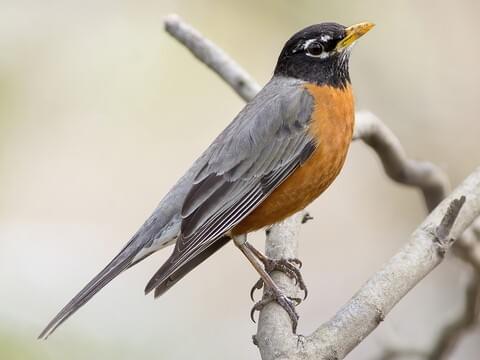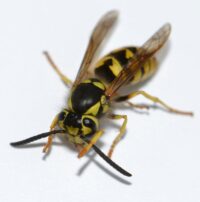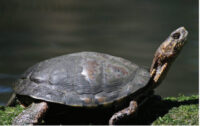Everyone is seeing robins everywhere this year! Impressive flocks of the familiar rusty-breasted all-American bird are feeding on berries and searching the ground for worms all over Sonoma Valley. I’ve spotted robins along the bike path, at Maxwell Park, at the Sonoma Valley Regional Park, as well in my yard in the Springs. Reports from across the state from Mendocino to San Diego tell the same story: so many robins!
“Lots of huge robins this year, why?” asked my backyard bird watching friend Lynda E. in the Springs. Nature lover Nancy K. noticed the robins visiting her home and gardens all looked so plump. Then fellow bird lover Ruth C. reported this: “Robins are having a berry and olive eating fest in my yard. At least a dozen plus flitting around in bushes and trees.”
So are there really more robins in Sonoma Valley this year? Bird experts seem to think so. But it’s not entirely clear.
Resident bird guru Gene Hunn recently noticed good sized robin flocks around Sonoma Valley. A well respected and avid birder, Gene has helped lead the Christmas Bird Count in Sonoma Valley for years. He thought that the recent influx of robins could be due to the late season rains. Robins do love worms that come to the soil surface after rains. Or that the wild berries ripening now are attracting the hungry avians, but no one knows for sure how many are here now or why.
Hunn shared robin counts from recent Sonoma Valley Christmas Bird Counts: last December’s robin count totaled 5,000 birds, slightly higher than the previous three years but lower than the average of about 7,000 between 2005 and 2011. The maximum over the past five years was 17,936 in 2018. The lowest recent count was 2,231 in 2021, a peak drought year, when food was probably less abundant.
Gene also noted that in previous decades, birders have counted flocks of 10,000 robins at a time in Sonoma Valley.
American robins live and nest in Sonoma Valley year-round. These sweet little birds also breed and migrate great distances, from the far north in Canada and Alaska to winter in California and south to Mexico and beyond. In colder places, the robin is a sign of spring. In Sonoma Valley, we see them arrive in bigger numbers in winter when migrating flocks descend.
The robin is an easy bird to identify as it’s not shy. Its distinctive red breast is prominent and it has a black head, yellow bill, a striped throat, and a broken white eye ring. It stands about eight to 10 inches tall. The lovely light greenish-blue egg of the robin has inspired the color of paints and clothes.
Robins are fairly common, so birdwatchers don’t get too excited about seeing them. But I was stopped in my tracks by a strange looking white mottled robin back in February 2015 when walking on the east side of Sonoma. Turns out it was a leucistic (loo KISS tick) bird, lacking some pigments needed to color its feathers. Instead, white feathers grew all over giving it a patchy look like a calico cat. It’s in the genetics and apparently not harmful to the bird.
Another time, a few months after the wildfires in December 2017, I recorded a huge chorus of robins in a stand of trees at Glen Oaks Ranch. Above in the Mayacamas, the land was still stark and burned. But there in the branches high above the creek, the robins were joyous and thriving. I was awed. What a wild Valley!






Be First to Comment